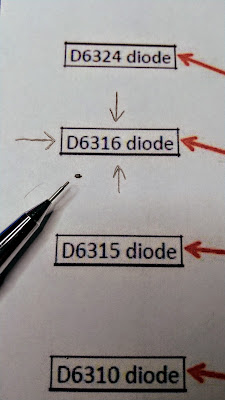Happy (belated) New Year! Boy, what a January it's been, and it's not even over. Let's take a look at what's been going on since before Christmas.
- Disgust. I've had it with Yaesu's overly complicated configuration settings on their HF radios. I've wasted more time trying to set -and keep - settings where they should be for digital comms on Yaesu's current line of HF radios. I can understand why ham radio software developers are programming first for Icom radios (the IC-7300 has become something of a default standard for radio programs - the developers will code for it first and then move on to other models). It's sad, because Yaesu makes really good radios. They really do. But I'm too old now to waste time trying to figure out Yaesu's command and configuration settings. I'm moving to an 'Icom pure' fleet just as fast as I can
- China. I've also had it with China. I spent a good chunk of January helping to care for a very close relative who was near death for a few days due to the Omicron variant. Thank God she pulled through, but she left the hospital with scarred lungs and a persistent case of viral pneumonia. We can argue endlessly about whether the COVID 19 release was intentional or accidental, but there's no arguing that China intentionally hid the truth about the true nature of the disease long enough for the virus to get a devastating foothold in the US and other countries. I've never used this language on my blog before, but in this case it's deserved: Fuck You, China. I have stopped intentionally purchasing Chinese made products, and that includes Amateur radio gear. I know not buying Chinese products is impossible in the larger sense - damned near everything sold in Wal-Mart is made in China. But on discretionary purchases I will not intentionally buy a China-manufactured product. That includes Icom, Kenwood or Yaesu branded items that are made in China, and it damned sure includes Xeigu/Baofeng/AnyTone/Wouxun/Banggood/whatever
- MARS mod. Six months after selling my Icom IC-7100 to a fellow ham, stupidly thinking my Yaesu FT-991 would fill the need (see above), I went out and bought another. Life is better now. But I needed to do the MARS mod to it. The mod isn't difficult - you just remove a single diode from the board - but it's a very small diode that sits on a portion of the mainboard that is tightly packed with diodes that need to remain unmolested. I've done MARS mods to Icom and Yaesu radios in the past, and in particular, I had done the mod to the IC-7100 that I had sold to my fellow ham, so I knew what I was up against. So, it was back inside the guts of this new 7100 with a soldering iron and shaky hands. Damn, these components are small!
 |
| That speck at the tip of the pencil is the diode! |
Setting aside my previous rant about Yaesu radios, I actually prefer how Yaesu handles these wide TX mods. Rather than yanking something off the board, Yaesu just has you place a solder bridge across two open pads on the board. Much easier to do, and much easier to recover from if you make a mistake.
- Things On The Horizon
- Winter Field Day! Winter field day is next week, and our club is planning to set up at a nearby state park and have some fun. I'm sure I'll be reporting on it later. Right now I'm in the equipment selection mode. What modes do I want to run, and what hardware do I need? I'll probably make the final decision just before I pull out of the driveway. Stay tuned.
- DSTAR. Our local DSTAR repeater has been disconnected from the internet. This was done as a cost saving measure as we work on relocating it to a new tower that provides better (and cheaper) internet access. We can talk on it using the local repeater mode, but we can't connect to any of the reflectors. We had some rough weather move through earlier in the week and the state ARES directors were telling folks to monitor reflector 30A. Oops. So I went hunting for a DSTAR hotspot. Talk about another supply chain and chip shortage victim! The only one I found was a ZUMSpot USB dongle, and the one I got was one of only two left in HRO's US inventory (up in the New Hampshire store). Right now I'm watching it wander slowly in my direction via USPS.
- Scanners. Our county (Fayette County, GA) is planning on switching over to its new P25 digital public service radio infrastructure sometime later this spring. This means my old (but very capable) Radio Shack trunk tracking analog scanner will go silent. Grrrr... This transition is over a year behind schedule (COVID, contract issues, the usual stuff), but when it's turned on the transmissions will be encrypted. Double Grrrr... I don't know if the encryption applies only to law enforcement, or involves public utilities, transportation (school busses), and other non-LE users. Personally I feel going full time encrypted is a big mistake. I can understand it for certain tactical channels (for police or sensitive emergency operations), but there's no reason to encrypt EVERYTHING. There is good reason to keep things unencrypted. When bad weather hits, the first thing I do is turn on my scanner to monitor what's happening in the county. Discussions about power outages, trees down, roads blocked, etc. are usually multi-agency discussions, between police, fire and public works. They provide much needed situational awareness without the need to phone











